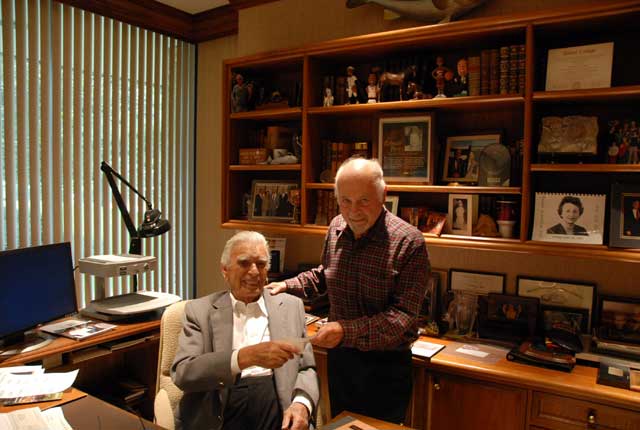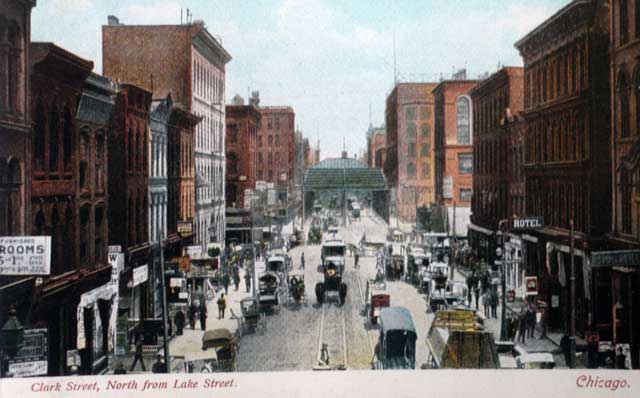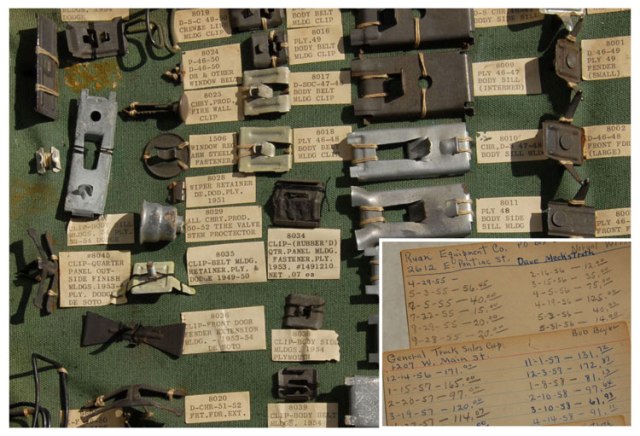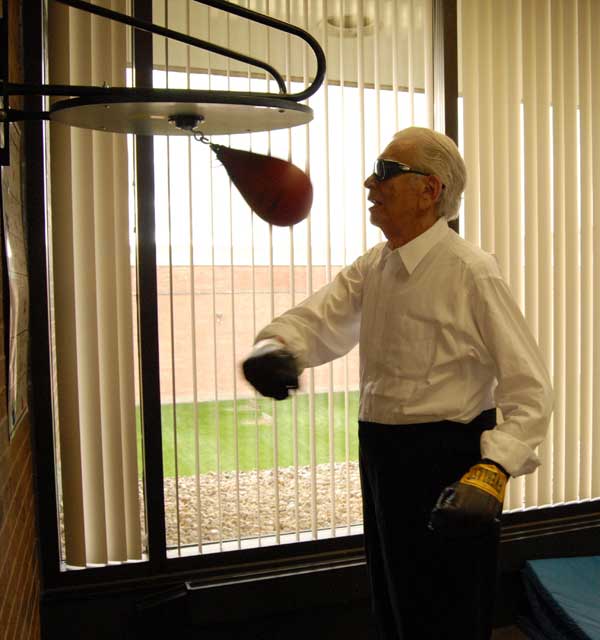From the Vault of Art Shay: The Unsung Billionaire
By Art Shay in News on Jul 27, 2011 6:00PM
Yesterday, one of the smartest people I ever knew, a beloved nephew and lifelong friend who used to schlep my SI telephoto gear for me around Michigan State football games, was telling me yet another story about his creative (probably) billionaire son starting a new kind of financial business based on a recent idea he had. I was prepared because a few years ago when Fortune and the Economist pegged his quiet financial empire at a mere $900 million and in my car I asked the modest son, "How many employees do you have now?" He held up five fingers.
"Five?" I said, surprised. .
"Five hundred," he corrected, then, embarrassed, changed the subject. Of course he was only getting started then.
So yesterday I naturally asked his dad how many employees he now had.
"Hard to say about his original company," said the dad. "It keeps growing. "But I think he's starting the new one with 1,000 well screened experts - he's recruiting all over the world for this new venture. And even before I could make a mock gesture of whipping out my checkbook, he assured me, "He doesn't want or need any outside investors."
The only reason billionaires come to mind just now is the public's sudden fascination with some of these super-winners. Like last week's performance by disgraced Rupert Murdoch, whose only humanizing phrase, "It was the humblest day of my life" came to him courtesy of his clean-up squad led by my old Chicago friend Dan Edelman and his PR associates. Billionaires have a good nose for hiring the best.
Which brings me to one of Chicago's least known and unsung millionaires, Sid Port, who died at age 96 about four years ago. Some months earlier Sid Port had hired me to do a book of words and pictures about his life and his life's work- building Lawson Products. Under Sid's brilliant hegemony, Lawson had built the vast Des Plaines corporation into a giant auto parts organization which quantified searches for parts from ancient Packards to last year's Fords and Chevys. He opened warehouses in a dozen American, Canadian and Mexican cities to serve the buying public he had long wooed and won. A buying public that soon included China, Korea, Germany and a UN-load of others. By the time Sid died, the company had half a billion in annual revenues and more than half that again in assets.
"Not bad," Sid would sometimes joke, for a kid who married the boss's daughter and who borrowed - and paid back - every penny shortly after we started in 1952."
Unsung? A milestone book devoted to Jewish philanthropists in Chicago less than a decade ago didn't even mention Sid Port. Deservedly, the Crowns, Pritzkers and a few others were lauded. But not the man whose philanthropy list honored such cultural icons (some noted by the New York Times) as the American Jewish Committee; the Art Institute; the Chicago Historical Society; the Field Museum; Goodman Theatre; Hinsdale and Mt. Sinai Hospitals; Joffrey Ballet; Millennium Park (that northeasten corner is Sid's gift); Lyric Opera; Newberry Library; Ravinia; Roosevelt University; Little City; Shedd Aquarium; Shimer College; University of Chicago; WTTW Channel 11 and many more.
His buddy, columnist Irv Kupcinet, often sang his praises - especially when he won at golf or one of his 200 race horses triumphed. He was proudest of Wolfie's Rascal winning two legs of the mid-America Triple in 1982. Sid often complained of the IRS rules changes in the eighties "that prevented horse owners from using gains in their businesses to offset losses in racing."
During Sid's last half-year of life he pressured me to "finish my book". A flunky of his with literary aspirations but minimal skills began to bug me to finish the book in two months rather than the six months Sid and I had agreed it would take to finish the book. "Two months!" he said, then ordered me to vacate my office at Lawson and to stop using the company's talented art director, who indirectly worked for this myrmidon. I found out why from Sid. "Just ignore the SOB," Sid told me. "He thinks you're a famous photographer but he doesn't like your writing in your books. He wants to do his own book. So let's see if he can do it and if it's better than yours, we'll print them both."
This guy never presented a single book page or idea and brownnosedly complained to Sid that I had hired my West Coast writer son to do some interviewing there and, even worse, I had hired an aerial photographer to shoot the company's dozen plants in different states and countries- for an outrageous $5000!
This aerial guy did a fantastic job which helped me add 16 gorgeous color pages to the layout- which I did finish in two months. My antagonist, I learned, suggested we use existing black and white, somewhat unfocused frames made by local newspaper photographers and save $4000. He resented my using "big-league Life-style coverage" on Lawson Products.
When I playfully whipped my camera in this dullard's direction at Sid's funeral, he turned his face away for some reason: not for the disservice he had done his wonderful boss Sid or the Port-built company that would shortly fire him.
Or the dissension he tried to create between me and my favorite Chicago billionaire. I like to remember it was Sid Port who was the first responder to the director of the Chicago History Museum when he asked for donations to help print, frame and mount a retrospective exhibit of my work. Sid Port read the request and immediately sent his check for $25,000.
If you can't wait until this time every Wednesday to get your Art Shay fix, please check out the photographer's blog, which is updated regularly. Art Shay's book, Nelson Algren's Chicago, is also available at Amazon.






